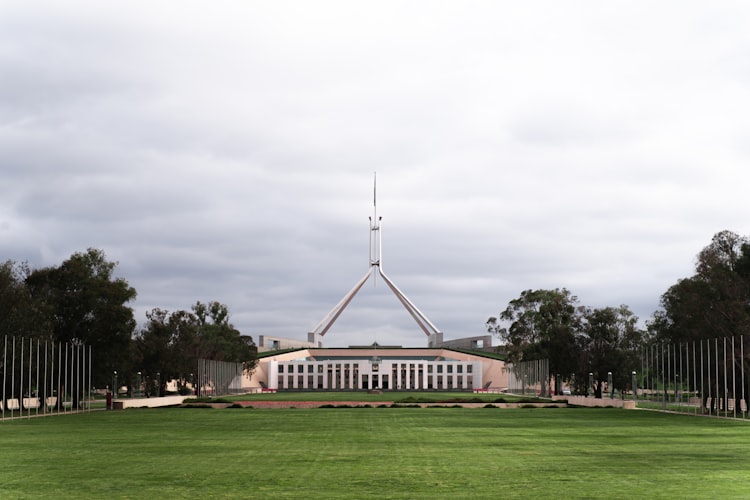Thanks to Bran for the invitation, Geoff for the introduction and to you all for being here.
It’s a pleasure to be back for this annual gathering on Ngunnawal and Ngambri land. I acknowledge, as Geoff did, elders, customs and traditions.
I know I speak for Mark, Katy, Don, Chris, Murray and Andrew when I say our attendance is a symbol of our appreciation for your engagement with us on economic policy.
It’s also another chance to thank you for the jobs and opportunities you create around Australia.
And from a personal point of view, to thank you for the opportunity we have to catch up every month or 2 with the board or other small groups, to compare notes.
This bigger gathering is timely in political terms with an election due by May.
It’s also timely from an economic perspective.
We’ve seen really important data released in the last month, a new administration in the US making some big announcements, some volatility in markets as well.
I want to focus almost exclusively on economics tonight.
Because 2 inflation readings and the jobs figures have brought the soft landing we have been working towards into sharper focus.
Last week’s CPI data saw underlying inflation fall to a 3‑year low and headline inflation fall to an almost 4‑year low.
That represents the sharpest moderation in a parliamentary term since inflation targeting began.
Even more extraordinary that we’ve made this substantial and sustained progress on inflation at the same time as we’ve seen the creation of more than 1.1 million new jobs.
I put it this way because I think we’re on the cusp of achieving something remarkable, together.
Inflation is down, unemployment is still low, and, unlike most of our peers, we’ve avoided even one negative quarter of growth.
You’d know and appreciate how unusual this is in historical terms and in contemporary global experience as well.
Every other time we’ve gone through an inflation spike, it’s been followed by higher unemployment.
On other occasions and now in most other advanced economies progress on inflation has been paid for with much higher unemployment and negative quarters of growth.
Since the start of 2022 every major advanced economy, and two-thirds of the OECD, has gone backwards at least once.
We’ve made as much or more progress on inflation without paying that price.
Before I get carried away here let me acknowledge 3 important truths.
Australians are still under very substantial if not severe financial pressure – we get that.
Our economy is not productive enough – more on that shortly.
And our economy is barely growing – an inevitable consequence of higher interest rates and global pressures.
In this soft economy there have still been some remarkable developments we shouldn’t dismiss or diminish:
The lowest average unemployment rate for any government in 50 years.
Stronger employment growth than any major advanced economy.
Four in every 5 of the 1.1 million jobs created in the private sector.
More jobs created in the market sector than any first‑term government on record.
Record labour force participation.
The strongest rate of real wage growth since 2020 – and now 4 consecutive quarters of annual real wage growth.
The narrowest gender pay gap on record.
Unemployment at 4 per cent and inflation below 3 per cent at the same time, for the first time in half a century.
The highest level of business investment in over a decade, in the last financial year.
25,000 new businesses created each month this term, the highest average on record.
27 share market record highs since the election –
25 per cent growth in household wealth via super and shares as a result.
The biggest nominal improvement in the budget in a Parliamentary term.
The first back‑to‑back surpluses in almost 2 decades.
We know the job’s not done and the economy is not yet what we want it to be but there is progress to be proud of too.
I run through this list not to take the credit, but to share it.
Because our exceptionalism is the result of governments, employers and employees all doing their bit.
This is the soft landing we’ve been planning and preparing for.
We decided we’d rather deliver a soft landing than clean up after a hard one.
It’s why our economic plan was always about fighting inflation without ignoring risks to growth.
Public demand has played a role in keeping the economy from going backwards over the past 2 years.
But we know that the best kind of strong and sustainable economic growth means growth led by the private sector.
When I’ve said this on many occasions before, I’ve seen it written up as some kind of reluctant admission, but I think it’s just common sense.
Our economy is at its best when it’s private companies powering growth and propelling us forward.
This is what guides our productivity agenda.
It has 5 pillars:
Creating a more dynamic and resilient economy.
Building a skilled and adaptable workforce.
Harnessing data and digital technology.
Delivering quality care more efficiently.
Investing in cheaper, cleaner energy and the net zero transformation.
We’ve asked the Productivity Commission for a big piece of work on each pillar, deliberately timed for the second half of this year to inform whoever wins the election.
But we haven’t been waiting for those inquiries to land.
We’ve already put in place some substantial and under‑recognised policy:
Abolishing 500 nuisance tariffs.
Introducing comprehensive competition reforms.
The biggest overhaul to merger settings in 50 years.
Better designing and informing our capital markets.
Reforming our foreign investment framework.
A $900 million ³Ô¹ÏÍøÕ¾ Productivity Fund.
Record investment in skills.
The Universities Accord.
Finishing the NBN.
Investing in quantum computing.
Reforming the NDIS.
Unlocking tens of billions in private investment via the Capacity Investment Scheme.
Realising net zero industrial opportunities through a Future Made in Australia –
Like our green hydrogen, critical minerals, and green aluminium production incentives.
This list isn’t exhaustive but it’s indicative and I use it to make this point:
There was a big focus on productivity in this first term and there will be an even bigger focus in a second, should we win one.
Let me give you a couple of examples.
Take regulation.
Here I pay tribute to all the work Katy has been driving to harmonise standards, streamline accreditation and make it easier to export Australian goods.
This year, we’ll also stand up our single front door for investors –
And I can let you know tonight I’ve asked Danielle Wood to look into how we can further streamline regulation as part of the inquiries the PC are doing on our 5 pillars.
This is all aimed at making it easier to invest, easier to hire, easier to trade and easier to do business in Australia.
Historically, more than half of our productivity growth has come from working smarter – combining our skills and capital resources in more efficient and innovative ways.
Here it’s AI and the digital economy where we see huge opportunities.
You only need to look at the events of the last few weeks to get a sense of the scale and breadth of the sweeping change AI presents.
From the Americans announcing the $800 billion Stargate AI project one day –
To Chinese start‑up DeepSeek causing $1 trillion to be wiped from Nvidia’s market cap – the biggest one‑day rout in the history of the US share market.
It’s clear AI will become a bigger part of our economy and lives.
How we respond will shape the future.
Australia is among the top 5 global destinations for the data centre infrastructure AI depends on.
Our reputation and software development know‑how also means we’re a priority market for AI app development.
Already 70 per cent of Australian businesses have implemented AI and another 20 odd per cent are planning to in the next year.
It’s a big focus for us now and will be over the coming years.
Ed has already done a lot of work on how we get the policy settings right – including how to make sure AI is deployed safely and sustainably.
Our focus with AI is also on the huge gains on offer, not just the guardrails.
We want to continue to build and foster innovation, so more workers and more businesses adapt and adopt AI to their advantage.
And also give investors clarity and certainty to invest in AI infrastructure in Australia with confidence.
That will be a big focus our ³Ô¹ÏÍøÕ¾ AI Capability Plan for Australia.
We want you to bring forward your ideas, your innovation and your ambition to shape that plan.
We’ll always listen when you do –
We read with interest the BCA’s 2025 election platform this week, with technology, AI and deregulation all featuring.
Because we know to make the momentous changes happening in the digital economy, energy transformation, services sector, geopolitics and demographics work for us, your ideas and insights will be key.
The patterns of history tell us what happens when our relationship is at its best.
Those of you who have heard me speak a lot will recognise my obsession with our fourth economy.
Let me put this in some broader context.
You all spend as much time in airport bookshops as me.
And you’re all probably bigger readers than I am when it comes to investing and market cycles.
So I know you’d all be familiar with people like Ray Dalio, George Friedman, or Neil Howe and William Strauss.
They’re all grappling with a similar question:
Where do we fit in the bigger sweep of economic history and how should that inform our strategy?
In the US, 80‑year historical cycles lead from one kind of society and economy to the next.
For Australia it’s more like 40‑years.
Every 4 decades or so from the 1900s we have transformed our economy.
From largely agrarian at the start of the 20th century.
To one that was industrial and protected after the Second World War.
And then unshackled and opened up to the world in the 1980s.
Every time one of these 3 economies has taken shape the private sector has been at the forefront of the transformation.
In the 1900s it was the wool and wheat industries.
In the 1940s it was manufacturing, underpinned by trade agreements which supported our domestic and export industries.
And 40 years later, it was the services and financial sector – new drivers of growth unlocked as Labor dismantled the tariff wall and floated the dollar.
The BCA itself came to life during one of these seismic shifts – following Bob’s ³Ô¹ÏÍøÕ¾ Economic Summit in 1983.
It’s 4 decades since we unleashed our third economy –
And we’re now building a fourth, transformed by technology and powered by cleaner and cheaper energy.
An economy that ensures Australians are primary beneficiaries of all the churn and change occurring around the world.
Over the last 15 years, we’ve seen 3 major economic shocks, war, and tensions in our region.
At the same time as the big 5 shifts identified in our Intergenerational Report transform the world.
From globalisation to fragmentation;
From hydrocarbons to renewables;
From information technology to AI;
From a younger population to an older one;
And changes to our industrial base.
All this is shaped by a pronounced slowdown in China, a new administration in the US with new priorities, and an uncertain outlook for Europe and the Middle East.
The fourth economy is about how we make Australia an island of opportunity and prosperity in a sea of uncertainty.
Modernising our economy, managing pressures, and maximising our advantages.
We see a powerful and pre-eminent place for the private sector in the future we will build together.
Propelling our growth and pushing us forward.
Innovating and investing.
Employing and upskilling.
Our political opponents want to pick fights with you on cultural issues and take the country backwards, divided.
We want to work with you on the economy to take the country forwards, together.
We know we wouldn’t be approaching this soft landing without you.
And we know that we can’t build Australia’s fourth economy without you either.
For all these reasons I’m looking forward to the discussion tonight.








